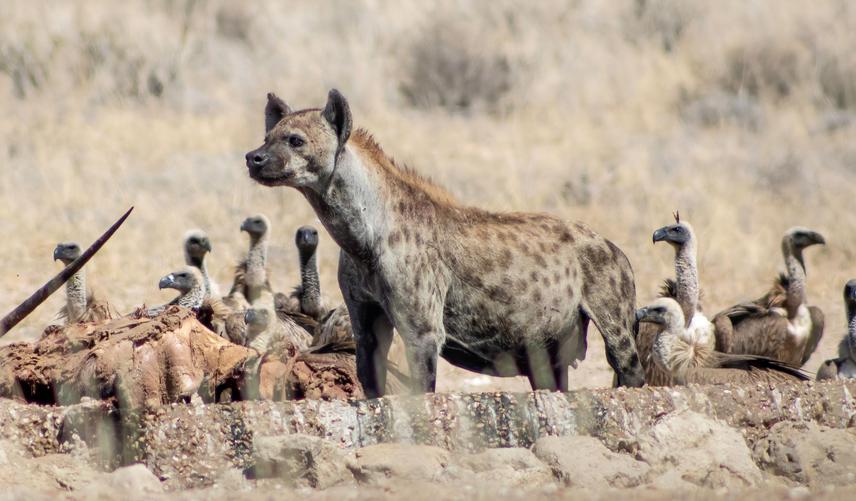Grace Warner
Predictions show that arid areas in Africa, such as the Kalahari, are going to experience a rise in average temperatures and decreases in average precipitation under climate change. This is a multi-faceted threat for arid-adapted species, as simultaneous reductions in food and water sources will decrease their ability to physiologically buffer against extreme temperatures. Increases in day-time temperature may decrease foraging time for diurnal species as exposure to heat will dictate active hours, decreases in water may decrease the capacity for evaporative cooling in some species, while decreases in food sources may prevent nocturnality in others as diminished energy reserves will decrease metabolic heating through cold nights. Nevertheless, most arid species will be able to reduce their exposure to extreme temperatures, and decrease the consequent physiological risk, by seeking thermally buffered microclimates.

Exposure risk. © Grace Warner
Microclimates are spatially and temporally restricted climates, where the thermal environment is defined by the local microhabitat. Although the thermal buffering capacity and importance of microclimates has recently been highlighted in species ability to cope under climate change, most species vulnerability or habitat suitability assessments still do not consider microclimates in their models. Most climatic predictions and Species Distribution Models (SDMs) are based on relatively course-resolution global data, which is often 1000’s of folds larger than the area that most species function within. This highlights the need for in-situ microclimatic data, as this is lacking on a global scale, with particularly scarce data existing from extreme environments. Furthermore, data on the availability and distribution of microclimates, and assessment of which microhabitats might be most valuable to arid species in terms of buffering potential, remains to be established.
This study aims to initiate a deeper understanding of the distribution, associations, usage and thermal landscape of microhabitats in the Kalahari, as a model arid ecosystem. By doing this, this project hopes to fill a substantial gap in current knowledge of microclimates in arid environments and allow future studies to model indigenous species vulnerability to climate change more accurately. This will hopefully lead to vital changes in conservation priority status and more efficient conservation resource-use over time.
Header: Burrows. © Thilo Beck.